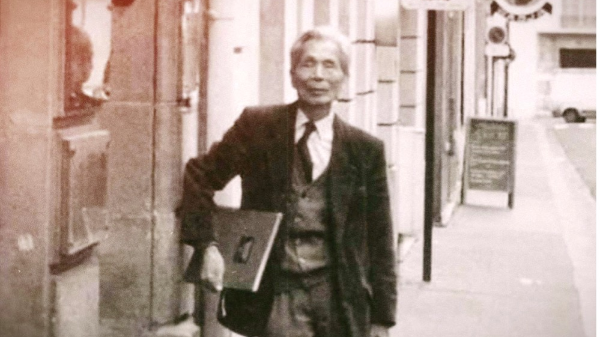

A file photo of Chinese modern artist Wu Guanzhong [Photo courtesy of CGTN]
Chinese modern artist Wu Guanzhong (1919-2010) is highly respected in the contemporary art world for
Starting from the age of 17, Wu dedicated himself to the study of art in Hangzhou, east China's Zhejiang Province, where he was influenced by 1920s French art trends, with many teachers having studied in France. This gave Wu Guanzhong the opportunity to simultaneously engage with both Chinese and Western art, learning styles like oil painting and traditional Chinese painting under different mentors.
In 1947, as one of three selected art students, Wu traveled by boat to Naples in Italy and then took a train to Paris. This was the first time Wu stepped out of his homeland. In Paris, he studied at the Ecole Nationale Superieure des Beaux-Arts under the guidance of J.M. Souverbie.
During his time in Europe, Wu Guanzhong also visited Italy, Switzerland, and England, immersing himself completely in the artistic culture of the continent. He drew inspiration from artists such as Camille Pissarro, Paul Cézanne, Sandro Botticelli, Georges Braque, Paul Gauguin, Henri Matisse, and particularly Vincent van Gogh, whose passionate creations deeply moved him and even transformed his understanding and aesthetics of art.
In the summer of 1950, Wu Guanzhong returned to China, and became a professor at the China Central Academy of Fine Arts in Beijing. Wu integrated both Chinese and Western painting techniques, dedicating himself to the localization of oil painting.
From the 1950s to the 1970s, Wu focused on creating landscape oil paintings and explored the Chinese adaption of this art form. He skillfully combined the direct and vivid depictions of nature in European oil painting with the spiritual and aesthetic ideals of traditional Chinese art.
Starting from the 1970s, Wu Guanzhong also devoted himself to Chinese painting. He used traditional Chinese materials and tools to express modern themes, seeking innovation in this traditional art form. His ink paintings were characterized by novel ideas and unique compositions, skillfully conveying poetic sentiments through the interplay of dots, lines, and areas. His works embodied both Eastern traditional charm and contemporary features.
Wu Guanzhong made remarkable contributions to the modernization of Chinese painting and the localization of oil painting. His creations not only enriched the expressive power of Chinese art but also facilitated the exchange and fusion of Chinese and Western cultures.
